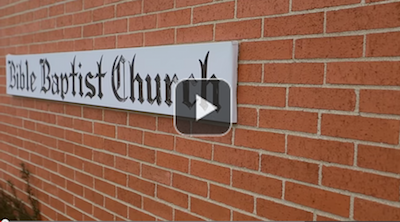SEPTEMBER 27 / OCTOBER 4, 2015
CHRIST AGAIN SPOILS THE PLOTS OF HIS ENEMIES
INTRODUCTION:
1. The ongoing exchange between Christ and His enemies is taking place in the temple at Jerusalem only days before He was to die on the cross.
2. Already Jesus had used parables to expose their wicked plot against Himself, and also to announce the judgment soon to come upon them.
3. They would have laid hands on Him to destroy Him, but were not able to do so because of the people. (Verse 19)
4. They settle upon a plot designed to entrap the Lord in His talk. If nothing else, they were relentless. How many times already the Master Teacher and Thought-reader had confounded them with His great wisdom.
5. As seen from Matthew’s account, the strategy of the Jewish leaders, civil, and religious together, was to send first one group and then another, in order to try and entangle Him in His talk. First came some disciples of the Pharisees with Herodians; then came a group of Sadducees; then came one of the lawyers. As the various spokesmen came forward, the whole council was gathered about so that they might hear.
6. Mark here records two of these inquisitions. The first (Verses 13-17) was intended to pit Christ against the Roman authorities, in hopes that they might come after Him. The second (Verses 18-27) was intended as another attempt to try and pit Christ and Moses, but particularly to disprove the doctrine of the resurrection.
I. THE PHARISEES AND HERODIANS CONSPIRE TOGETHER IN AN ATTEMPT TO PIT CHRIST AGAINST THE ROMAN GOVERNMENT. (VERSES 13-17; MATT. 22:15-22)
A. NOTICE FIRST, THE CONSPIRATORS AND THEIR PLOT TO ENSNARE THE LORD JESUS. (VERSE 13; MATT. 22:15-17)
1. What an unlikely alliance of certain enemy groups. The Pharisees were the strictest sect of the religious orders. The Herodians made up a Jewish party in support of Herod’s family. They favored paying tribute to Caesar in order to have dominion granted by the Roman Government. This would put them at odds with the Pharisees, who were zealous for liberty from Rome.
2. The only agreement between the Pharisees and Herodians was their hatred for Christ. The world so hates Christ and His Church that all other differences can be set aside for sake of it.
3. There was an ongoing and bitter rivalry between the Pharisees and Sadducees. (See Acts 23:6-10) But on this they agreed – they both hated Christ, and against Him they here became fellow conspirators.
B. THEY ATTEMPT TO DRAW CHRIST INTO THEIR NET WITH FLATTERY (VERSE 14)
1. The Pharisees had well instructed their disciples in what to say, and how to say it.
2. They went not themselves, thinking that Jesus would surely suspect the plot if they went in person, so they sent spies (Luke 20:20) which Matthew calls their disciples. This is quite humorous, seeing that Jesus knew all of their secret designs.
3. They tried to set Him up with flattering words. They gushed over Him as being a true teacher that without respect of men’s persons taught the way of God in truth. Their flattery and hypocrisy was all wasted on Him Who knows what is in man.
4. Thinking that they have Him set up. They were now ready to move in for the kill.
C. THEY FIRE THE QUESTION THAT THEY THINK WILL GET HIM. (VERSES 14c, 15a; MATT. 22:17)
1. Many Jews were strongly opposed to the annual capitation tax imposed by the Romans.
2. Therefore, they are essentially saying, “Since you are a teacher of truth, and fear no man, (Caesar, Herod, etc.) tell us what you think about paying tribute to Caesar?” “Shall we give, or shall we not give?” (Vse. 15a)
3. Judas of Galilee, one of the many pretended Messiahs had taught against this tax, and had died as a consequence. (Acts 5:37)
4. The two conspiring parties were opposed to each other on this matter. Either way He answered would not set well either with one or the other. If He says, “Yes,” He could be seen as a traitor to theocracy. If He answers, “No,” He could be accused of promoting rebellion against Rome.
5. Remember, He was later falsely accused of forbidding to give tribute to Caesar. (Luke 23:2)
D. THE LORD, BY HIS WISE ANSWER, AGAIN AVOIDED THEIR TRAP. (VRS. 15-17; MATT 22:18-21)
1. Jesus was not taken either by their flattery or their craftiness.
2. How easily He had read through their plot. (Verse 15)
3. Just as easily, He spoiled their plot, and at the same time shamed them publicly.
a) He asked for a penny. (a denarius) This was a Roman coin, used for the capitation tax.
b) He then publicly asks them to identify the inscription on the coin, which they did identify as Caesar’s.
c) Clearly, since it was Roman and not Jewish coinage, it bore the image of Caesar.
d) Their own rabbis taught that he is acknowledged as king whose coin is current. Whether, like it or not, they were under Roman rule.
4. It must follow that they must pay the tax in acknowledgment of the King. “Render therefore unto Caesar the things that are Caesar’s.”
5. There is a Sovereignty, however, that trumps that of any earthly king. “…and unto God the things that are God’s” The two renderings need not conflict necessarily. Wherein there is a conflict, “We must obey God, rather than men.” (Acts 5:29)
E. THE CONSPIRATORS WERE CONFOUNDED AND AMAZED. (VERSE 17c; LUKE 20:26)
II. THE SADDUCEES CAME UP WITH A PLAN TO CHALLENGE THE DOCTRINE OF THE RESURRECTION,AND TO TRY AND PIT CHRIST AGAINST THE LAW OF MOSES. (VERSES 18-27; MATT. 22:23-33) Although they frequently were a party with those who would try to get Jesus to do or say something contrary to the Law of Moses, in this case, they aimed their attack at the essential Christian doctrine of the resurrection.
A. THE SADDUCEES – WHO THEY WERE. (VERSE 18)
1. The Sadducees were a religious sect among the Jews who did not believe in the resurrection.
2. They were the religious liberals of their day. Like our modern day rationalists, they rejected the supernatural. They did not believe in angels. They did not accept the full inspiration of Scripture, thus rejecting many books of the Old Testament.
3. Their disagreements with the Pharisees about these things would sometimes become violent. (Acts 23:6-10) This goes to prove that Satan’s house is divided, and must fall. Nevertheless, in its hatred for Christ it can put forth a united front.
B. THE QUESTION RAISED BY THE SADDUCEES – WHAT IT WAS ABOUT. (VERSES 19-23)
1. Clearly, the question was hypothetical. It involved a case wherein one woman was married to seven brothers in succession, bearing no children to any of them. The Sadducees had probably conjured up other stories like this to use against those who believed in the resurrection. Perhaps they were able to stump some of their opponents with such question.
2. According to the Law of Moses, which writings they accepted as Scripture, each brother had her legitimately, therefore, whose wife would she be in the resurrection? Christ’s enemies, like their master, were making a serious mistake in trying to challenge Jesus with Scripture.
3. They, not believing in the resurrection themselves, but knowing of Christ’s doctrine, thought surely they had stumped the Lord.
C. THE RESPONSE GIVEN BY CHRIST TO THE QUESTION WAS SWIFT, POWERFUL, AND IRREFUTABLE. (VERSES 24-27; MATT. 22:29-32)
1. Notice first our Lord’s sharp reproof of their ignorance. “Ye do err, not knowing the Scriptures nor the power of God.” (Verse 24)
a) Their question, which was meant to stump the Lord, was actually framed in ignorance.
b) This is always the case when scoffers try and challenge Christian doctrine. (Example: II Pet. 3:3-10)
c) They were ignorant of the Scriptures which clearly teach the resurrection; plus, they were ignorant of the power of God by which the dead are raised.
2. Jesus carefully explains that in the world to come it will not be as it is in this world. The children of the resurrection will not marry. (Verses 25, 26)
a) He says that they will, in this respect, be like the angels. He is not saying that we will have the natures of angels.
b) The reason is simple. The holy angels are an exact number, and there is no need for procreation. So it is with God’s elect who shall inhabit heaven. There is no death there, and therefore no need for reproduction, and thus, no need for the marriage union.
3. As to the resurrection itself, Jesus validates His charge of ignorance against them by proving the resurrection from the Scriptures – even from the writings of Moses, which they professed to believe. (Vse. 27; Matt. 22:31; Exod. 3:6)
a) The argument He makes is that God did not say to Moses, “I WAS the God of Abraham, and the God of Isaac, and the God of Jacob.” But, long after the patriarchs were dead and buried, He said, “I AM the God of Abraham…”
b) Those who seem to think that exactness with respect to Scripture is not so important might want to take note. Jesus had such high regard for the Holy Spirit’s work that He built this case for the resurrection upon the tense of a verb. Even the “jots” and “tittles” are important to God.
D. ABRAHAM, ISAAC, AND JACOB HAD NOT AS YET RECEIVED THEIR RESURRECTION BODIES, BUT THEY WERE ALIVE, AND WOULD MOST ASSUREDLY RECEIVE THEIR NEW BODIES, ALONG WITH ALL OF THE SAINTS IN THE RESURRECTION AT THE LAST DAY. (I COR. 15:20-23)



Speak Your Mind